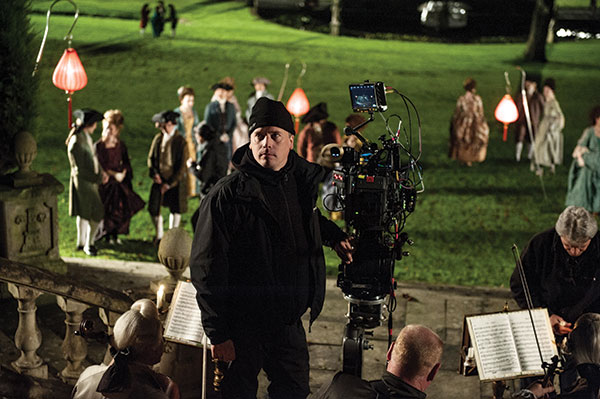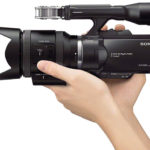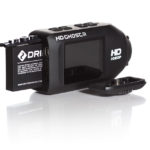
Drama Goes Ultra – User Review of Sony’s F65 Camera
Posted on Feb 19, 2013 by Alex Fice
 Belle, Starring Gugu Mbatha-Raw (pictured), Tom Wilkinson, Sarah Gadon (pictured), Miranda Richardson and Emily Watson, and directed by BAFTA Award winning director Amma Asante.
Belle, Starring Gugu Mbatha-Raw (pictured), Tom Wilkinson, Sarah Gadon (pictured), Miranda Richardson and Emily Watson, and directed by BAFTA Award winning director Amma Asante.
DoP BEN SMITHARD reports on the first feature shot using SONY’s flagship camera the F65. What it gave the production and how the 4k data was handled and wrangled.
The upcoming Pinewood Films release BELLE is the first major British motion picture to be shot using Sony’s F65 CineAlta digital production camera. Starring Gugu Mbatha-Raw, Tom Wilkinson, Sarah Gadon, Miranda Richardson and Emily Watson, and directed by BAFTA Award winning director Amma Asante, the period drama inspired by the life of Dido Elizabeth Belle who was the illegitimate daughter of Lord Mansfield’s nephew Captain John Lindsay.
When he was 23 John Lindsay had a relationship with a black woman named Maria Belle while he was in the Caribbean, who bore him a daughter. Belle or Dido as she was to be known was the result and the film tells the tale of her subsequent life in England.
Director of photography was Ben Smithard: “We shot Belle in a range of different environments – on location and at Pinewood – and having a camera that was easy to use and delivered such detailed images in bright and low light was essential for such a visually-rich period feature. Having such detailed and colour-rich true 4K DPX files for the DIT and post production team to composite from means the final cut will be as close to actually being on set as possible.”
 DoP Ben Smithard on-set with the Sony F65.
DoP Ben Smithard on-set with the Sony F65.
We asked Ben how Sony’s new high end camera performed in it’s first UK outing
Why did you choose the F65 for shooting Belle?
The decision was made to shoot Belle on digital and after testing the F65 at MovieTech www.movietech.co.uk I could really feel the beauty of the images. The camera had a much softer, more pleasing image which worked perfectly for the natural look we were trying to achieve for Belle. I’ve also worked with Sony cameras in the past and know them to be very reliable
Was your intention to shoot 4K RAW?
It’s important to always shoot in the highest possible resolution with any camera so the images you take into post and grade are of the highest quality and purity. Regardless of whether the final cut is going to be in 4K or 2K, if you’re shooting a feature or a drama that uses the images to tell the story and elicit an emotional response from the viewer, you need as much detail as possible in the pictures you’re working with.
How daunting were the data figures you had to deal with – storage, workflow etc…
The camera itself ran smoothly and there were no technical issues. For the workflow we worked closely with 4K London www.4klondon.com and we became comfortable with the workflow very soon into the shoot itself. As it was a period piece, the shoot itself was not very fast-paced so we had time to swap SR Memory cards in and out of the camera between takes.
We had 9TB of storage on set and cleared the content from the drive each day after backing up.
We also used around 40 cards in total and off-loaded throughout the day. We also had a RAW viewer checksum to check all the bytes and alert us to any technical problems with the recordings, and the SR-PC4 alerts you to any errors on the cards so, you can run in-camera maintenance to recover the data. Once we got used to working with the F65 it became a straightforward process.
How easy/difficult was it to rig the camera in different rigs?
It was all very simple. We used a mixture of dolly, handheld, Steadycam and cranes to shoot Belle, and almost all of the time was spent on location. The F65 is a camera that’s built for filmmakers – the ergonomics meant it was easy to use regardless of how we were rigging.
Give me some details of the camera set-up – lenses, recording, ISO settings…
We chose an aspect ratio of 2.39:1 as it seemed to fit the ambition of the film and the style we wanted to shoot in. Lenses were Cooke lenses as they delivered the skin tones we were after and lighting was largely based on tungsten sources (and lots of them in some scenes) as well as some big HMIs.
We wanted to keep the lighting classical in style to fit with the naturalistic look we were trying to achieve for the piece and didn’t use anything as modern as Kino Flos.
How does the camera compare to others you’ve used in similar situations?
The F65 was incredibly reliable and the camera has huge possibilities. We shot over seven weeks, which is not that long for a period drama, and spent most of that time on location. The F65 never let me down on set and the images we got from the camera were truly stunning.
What is the point of shooting 4K at the moment, are you just achieving a master to then down res to 2K?
Shooting in the highest resolution possible is the most important thing in any camera to make sure that the pictures are of the highest quality and image purity. Shooting in true 4K meant we had much more information going into the post and the grade, making them images easier to manipulate. When you’re shooting something for the big screen, it’s important to have as much detail as possible.













